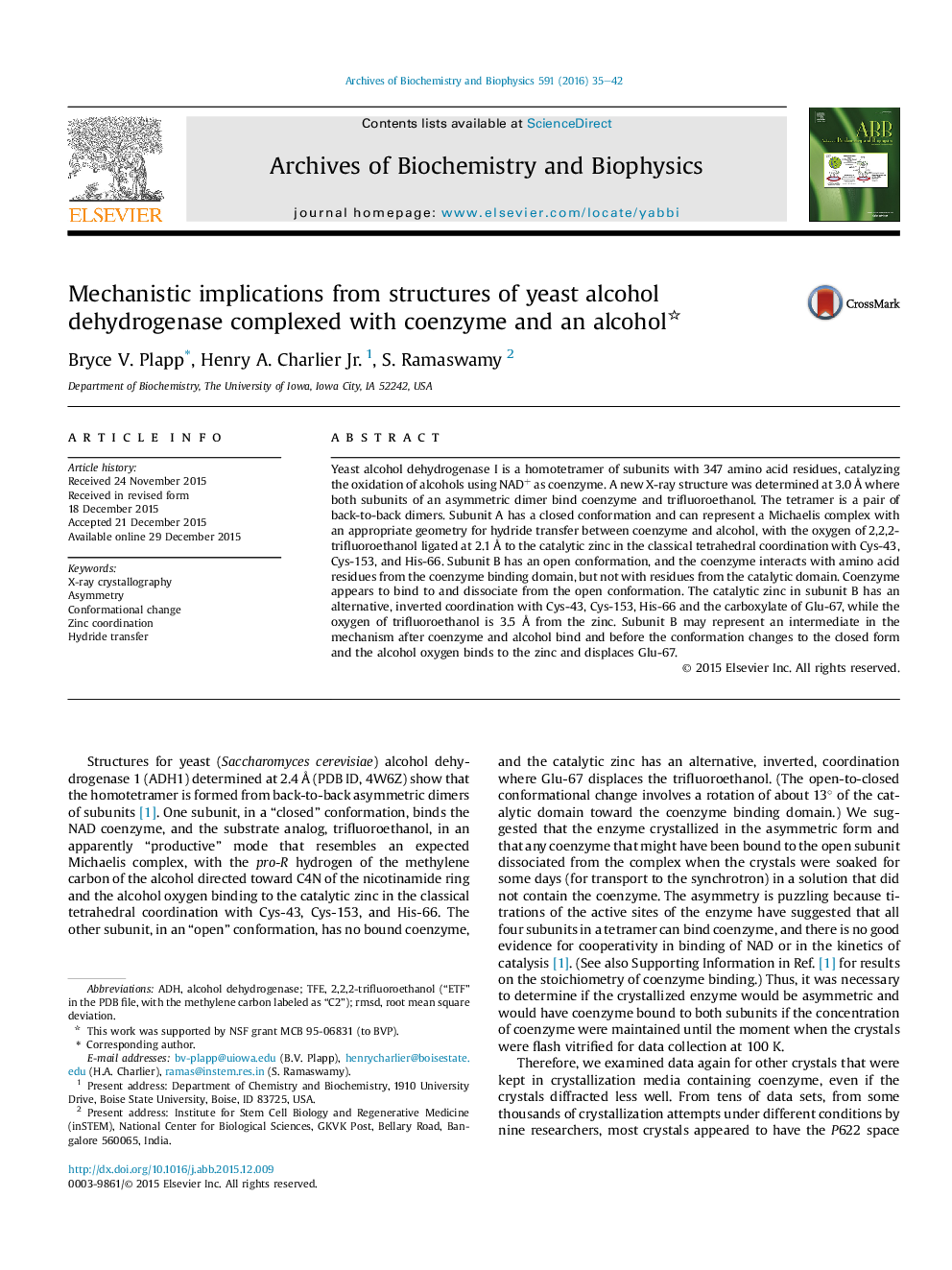| Article ID | Journal | Published Year | Pages | File Type |
|---|---|---|---|---|
| 1924808 | Archives of Biochemistry and Biophysics | 2016 | 8 Pages |
•A new crystal form has an asymmetric dimer with coenzyme bound to both subunits.•One subunit has a closed conformation that resembles a Michaelis complex.•The other subunit has an open conformation that can bind and release coenzyme.•Coordination of the catalytic zinc changes during the conformational change.•The open conformation can represent an intermediate between apo- and holoenzymes.
Yeast alcohol dehydrogenase I is a homotetramer of subunits with 347 amino acid residues, catalyzing the oxidation of alcohols using NAD+ as coenzyme. A new X-ray structure was determined at 3.0 Å where both subunits of an asymmetric dimer bind coenzyme and trifluoroethanol. The tetramer is a pair of back-to-back dimers. Subunit A has a closed conformation and can represent a Michaelis complex with an appropriate geometry for hydride transfer between coenzyme and alcohol, with the oxygen of 2,2,2-trifluoroethanol ligated at 2.1 Å to the catalytic zinc in the classical tetrahedral coordination with Cys-43, Cys-153, and His-66. Subunit B has an open conformation, and the coenzyme interacts with amino acid residues from the coenzyme binding domain, but not with residues from the catalytic domain. Coenzyme appears to bind to and dissociate from the open conformation. The catalytic zinc in subunit B has an alternative, inverted coordination with Cys-43, Cys-153, His-66 and the carboxylate of Glu-67, while the oxygen of trifluoroethanol is 3.5 Å from the zinc. Subunit B may represent an intermediate in the mechanism after coenzyme and alcohol bind and before the conformation changes to the closed form and the alcohol oxygen binds to the zinc and displaces Glu-67.
